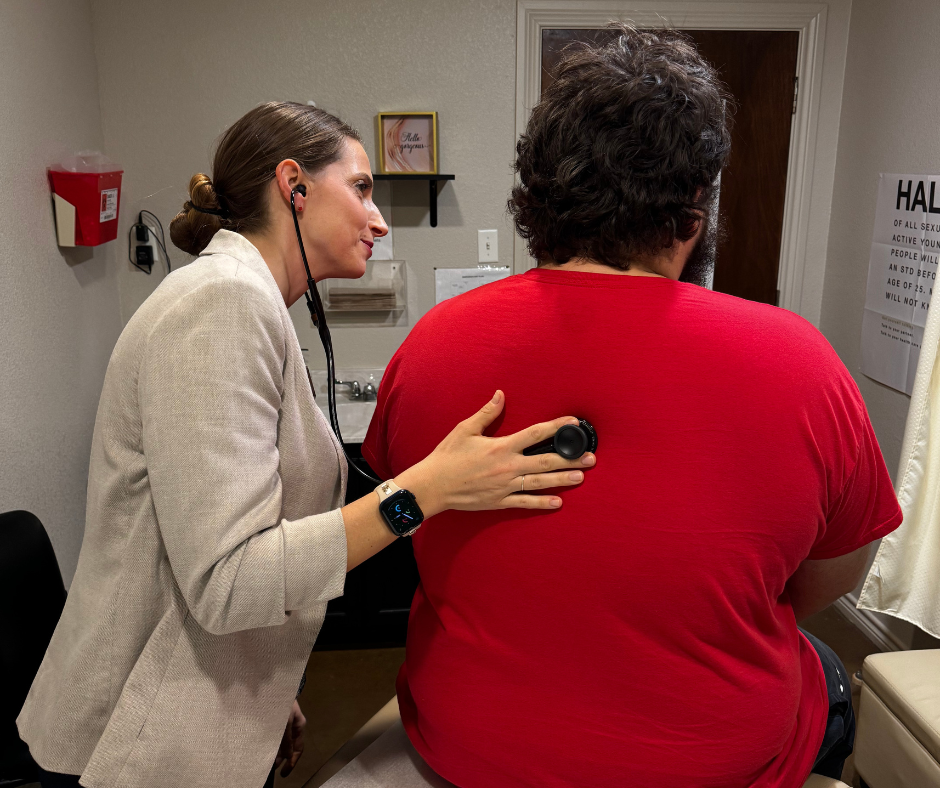By Monica McKitterick
•
September 19, 2025
Key Takeaways Direct Primary Care (DPC) offers unlimited, low-cost care with no insurance required, ideal for everyday health needs. Health Care Sharing Ministries (HCSMs) and Short-Term Plans offer lower monthly costs but come with coverage limits. Catastrophic Plans are designed to protect against big medical bills, not routine care. Discount Plans can lower the cost of prescriptions, dental, and vision services. Medicaid provides free or low-cost care for those who qualify based on income and state guidelines. Association Health Plans give self-employed or gig workers access to group-rate insurance options. Many people are eligible for ACA Marketplace subsidies , making full-coverage plans much more affordable. There's no one-size-fits-all ; The right option depends on your health needs, budget, and personal situation. 8 Affordable Health Insurance Alternatives in the USA Healthcare in the U.S. is expensive, and many people are feeling the pressure. According to a national survey , 44% of adults say it's difficult to afford their health care costs , and over one-third (36%) have skipped or delayed care in the past year because of cost . Even with insurance, many still struggle to pay for things like premiums, medications, or Primary Care Provider visits. And for millions of people, health insurance is either too expensive or doesn't offer enough coverage. The truth is, traditional insurance isn't the only option. In this post, we'll explore 8 affordable alternatives that can help you get the care you need, without the financial strain. What is Health Insurance Health insurance is a way to help pay for your medical care. You pay a monthly fee, called a premium , and the insurance company helps cover the cost when you go to the Primary Care Provider, get tests, or need treatment. Most plans also have things like deductibles (what you pay before insurance starts helping), copays (small payments for visits), and out-of-pocket limits (the most you'll pay in a year). Health insurance can come from your job, the government (like Medicare or Medicaid), or be bought on your own. But not all plans cover the same things, and many come with high costs that still make it hard for people to get the care they need. That's why more people are looking into different options for coverage. 8 Affordable Health Insurance Alternatives in the USA Not everyone can afford a traditional health insurance plan, and some people want a better way to manage their care and costs. The good news is that there are alternatives, and many of them are designed with simplicity and affordability in mind. 1. Direct Primary Care (DPC) Best for: Individuals and families looking for affordable everyday care without insurance hassles. Also great for: Small business owners, gig workers, and early retirees. Direct Primary Care is a membership-based model in which you pay a fixed monthly cost directly to your healthcare provider rather than an insurance company. In exchange, you gain unrestricted access to your primary care team. Here's what you get: Unlimited in-person and virtual visits Same-day or next-day appointments No copays, deductibles, or surprise bills Complete transparency on all costs Discounts on labs, medications, and imaging Support with weight loss, hormone management, chronic care, and urgent needs DPC is not health insurance, but it pairs well with catastrophic coverage or health sharing plans to create a more complete, flexible, and cost-effective arrangement. 2. Health Care Sharing Ministries (HCSMs) Best for: People who are part of a faith-based community and looking for lower monthly costs. Health Care Sharing Ministries are groups of people who agree to share each other's medical expenses. You pay a monthly "share amount," and when a medical need arises, the group helps cover the cost. What's Covered: Primary Care Provider visits Hospital stays Emergency care Some preventive services (varies by plan) What's Not Covered: Pre-existing conditions (may have waiting periods) Mental health services Preventive or routine care in some cases Care related to lifestyle choices is not aligned with the ministry's values HCSMs often require members to follow specific religious or lifestyle rules, such as attending church regularly, not using tobacco, and avoiding alcohol or drug misuse. Before joining, it's important to read the guidelines carefully to ensure they align with your personal beliefs and health needs. 3. Short-Term Health Insurance Plans Best for: Healthy individuals who need temporary coverage between jobs or during life transitions. These plans offer basic medical coverage for a short time , often 30 days to 12 months. In some states, plans can last up to 36 months. What They Typically Cover: Emergency room visits Hospital stays Surgery Some Primary Care Provider visits What They Usually Don't Cover: Pre-existing conditions Preventive care Mental health services Prescription drugs (in many cases) Short-term health insurance plans aren't designed for long-term needs because they offer limited coverage, often exclude pre-existing conditions, and can deny you based on your health history. These plans also aren't required to follow Affordable Care Act (ACA) rules, so essential benefits like maternity care or preventive services may be missing. They're best used for short periods, like between jobs or while waiting for other coverage. Still, they don't offer the protections or full benefits of traditional insurance, making them a risky choice for ongoing or complex health needs. 4. Catastrophic Health Insurance Best for: People under 30 or those experiencing financial hardship who want significant protection in case of serious illness or injury. Health plans that cover catastrophes are meant to protect you from major medical bills , like those from a serious accident or illness, by covering most essential health benefits only after you meet a high deductible (often around $9,000). Until you reach that amount, you pay almost all costs out-of-pocket, except for three free primary care visits and certain preventive services. That's why they're considered protection for worst-case scenarios, not day-to-day care. These plans are only available to people under age 30, or to those of any age who are eligible for an exemption because of difficulty or lack of funds, meaning the cost of other coverage is too high based on your income or circumstances. What They Cover: Three primary care visits per year Essential health benefits (after the deductible is met) Preventive services (like vaccines and screenings) Emergency and hospital care 5. Discount Health Plans Best for: People who want savings on basic care but don't need full insurance coverage. Discount health plans are not insurance, but they offer reduced rates on healthcare services when you use participating providers. You pay a small monthly fee (usually $10–$30), and in return, you get lower prices on things like Primary Care Provider visits, dental cleanings, vision care, and prescription drugs. These plans work like a membership card. When you visit a provider in the network, you show your card and receive a pre-negotiated discount. There are no deductibles or claims to file, and approval is assured, no matter your health history. 6. Medicaid (If Eligible) Best for: Low-income individuals and families, especially children, pregnant women, seniors, and people with disabilities. Medicaid is a government-funded health program that provides free or low-cost coverage. It includes Primary Care Provider visits, hospital care, prescriptions, mental health services, and more. Each state runs its own Medicaid program, so income limits and benefits vary depending on where you live. Your income must be below a certain level to qualify. For example, in Texas, a single adult with no children may not qualify unless they are pregnant or have a disability, but children and pregnant women have broader eligibility. You can find out if you are eligible and apply through your state's Medicaid website or HealthCare.gov . If you qualify, Medicaid offers some of the most comprehensive and affordable coverage available. 7. Association Health Plans Best for: Self-employed people, freelancers, small business owners, and independent contractors. Association Health Plans (AHPs) let you join a group or trade association to access health insurance at group rates, similar to what larger companies offer their employees. These plans are often available through professional organizations, industry groups, or local chambers of commerce. Since they spread the risk over a bigger group of people, AHPs can lower premiums and offer more choices. They may include dental, vision, or even life insurance. However, benefits and availability vary by organization and state, and some plans may not cover all essential services. Before joining, make sure the association is legitimate and that the plan is regulated. AHPs can be a smart option, but read the fine print so you know what's included and what's not. 8. ACA Marketplace Plans with Subsidies Best for: Individuals and families with low to moderate income who want full coverage. The Affordable Care Act (ACA) Marketplace offers insurance plans that follow strict rules. All plans cover essential health services, including preventive care, mental health, and pre-existing conditions. If your income qualifies, you can get subsidies to lower your monthly premium, and many people can get a plan for $0 per month. For example, in 2025, individuals earning under about $58,000/year, or families of four earning under $120,000/year, may qualify for financial help. The amount depends on your income, family size, and location. Enrollment occurs during open enrollment (each fall) or if you have a qualifying life event , such as losing a job, moving, or getting married. ACA plans are a good option if you want full coverage with consumer protections, especially when combined with subsidies that make the cost much more manageable. Final Thoughts Healthcare shouldn't feel out of reach. Whether you're between jobs, self-employed, or just trying to find something that actually fits your budget, there are more options out there than you might think. From Direct Primary Care to discounted plans and income-based coverage, you have choices, and it's okay to explore what works best for you and your family. If you're in the USA and looking for simple, affordable healthcare with no insurance required, we're here to help. Learn more about our membership plans or contact us today . Your care should be accessible and stress-free, and that's exactly what we're here for. FAQs: Community Questions About Affording Healthcare 1. Why is U.S. healthcare so expensive? A big part of the cost comes from how the system is built. Hospitals, drug companies, and insurance providers all set their own prices, and those prices aren't always shared up front. There's also a lot of money spent on paperwork, billing, and administration, more than in other countries. In the end, it means patients pay more, even for basic services. The lack of price transparency and high markups on medications, labs, and procedures often lead to bills that don't match the actual cost of care. 2. What happens if you don't have health insurance in America? If you don't have insurance, you usually pay the full cost of care out of pocket, and it adds up fast. A simple Primary Care Provider’s visit could cost over $150, and an emergency room visit could cost thousands. Many people delay or skip care altogether, which can lead to worse health over time. While there's no longer a tax penalty for being uninsured, the real risk is financial; one major illness or injury could lead to debt or bankruptcy if you're not protected. 3. How do I get health insurance if I can't afford it? Start by checking if you qualify for Medicaid or a subsidized ACA plan; many people do and don't realize it. You can apply through HealthCare.gov, and the application will guide you through the process. If you don't qualify, other options like Direct Primary Care, discount plans, or health sharing ministries can still help you access affordable care. Look into local community clinics or public health programs, which sometimes offer free or sliding-scale services based on your income.










